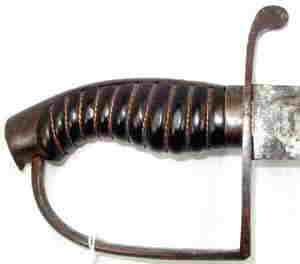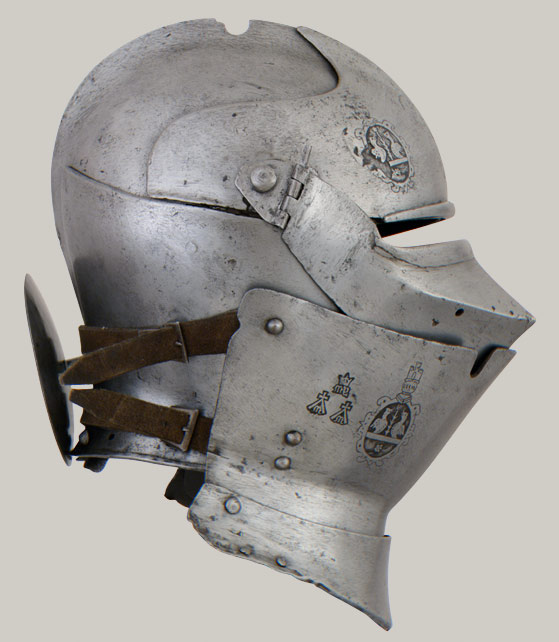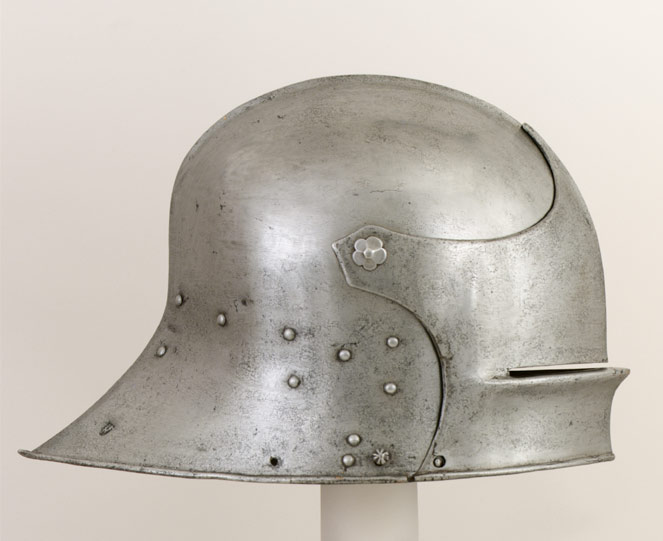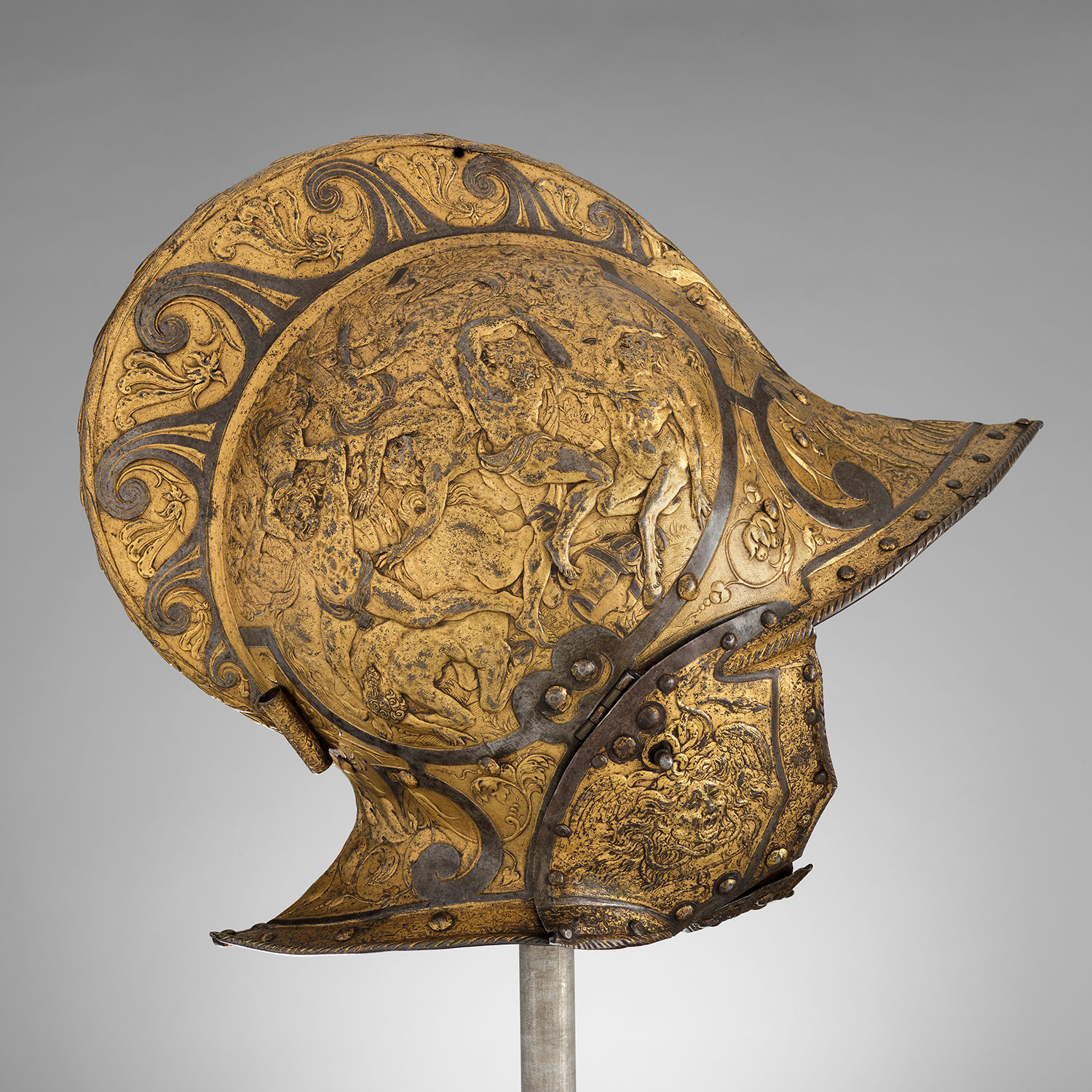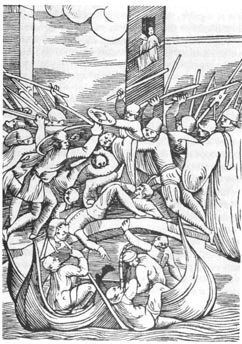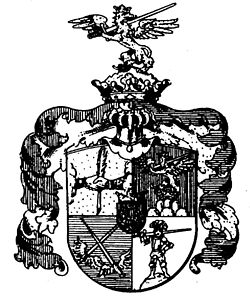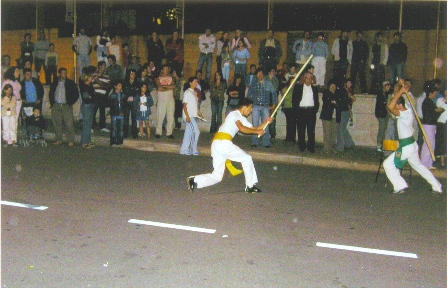How and when did medieval soldiers train
Hey haven't been around in a while, I thought I was overdue for a post on this thread.
On another forum a guy asked this question:
I've read a lot about sword training and training manuals like I.33, but how often were these actually used historically? I find it hard to believe that every soldier with a sword in, for example, the Battle of
Hastings, or
Agincourt was trained with a sword (at least under a "master"). How did average soldiers train themselves during the Middle Ages for sword fighting (or any weapons use for that matter)? Did they have instructors train them? Did they use texts to train themselves?
This is something which comes up a lot, and I think a lot of people really wonder about. So I'm taking a crack at it.
The manuals like
I.33, those in the
Lichtenauer tradition and etc. did not spring up out of thin air. They were reflections, maybe refinements, of martial arts traditions that went back aeons in Europe. Exactly like the traditions of what we know today as Kung Fu, Karate, Silat etc. in various parts of Asia. I know this is hard for a lot of people to understand today, but that is what the manuals reflect.
These martial arts traditions and explicit training for them, are not exactly a huge mystery. To this day there are numerous, myriad European martial arts kind of hiding in plain sight. The most obvious example is our modern form of 'Graeco -Roman' wrestling was an ancient tradition going back to the pre-history of the Greeks, who practiced a kind of Mixed Martial Art they called
Pankration .
In Medieval Japan, the equivalent of this was Jujitsu. In Medieval Europe, the equivalent was called Ringen or
Kampfringen, and when used with a weapon, Rignen Am Schwert. There may be a direct link to the earlier Mediterranean systems, some of the most famous masters of Ringen were Jews, such as Ott Jud and
Jud Lew.
Many of the underlying skills for fighting were also made into various sports. The sports which made up the original olympic games, the javelin, wrestling (pankration), boxing, the discus, running, jumping etc. were directly related to martial arts, as were the famous and usually somewhat caricatured Medieval Tournament of the knightly aristocracy. Fewer people are aware of the many similar traditions among the common classes. The Bridge Fighting in Italian Cities such as Venice, wherein people from the various neighborhoods would stage pitched battles with sticks etc. are just one example.
Traditions like this exist in hundreds of towns around Europe, in some cases evolving into quaint, comedic events popular with tourists like the tomatana in Bunol, Spain.
[ame="http://www.youtube.com/watch?v=HdgVULWrPfE&feature=related"]YouTube - Kelly packard en La Tomatina[/ame]
These kinds of traditions kept combat skills honed in the cities where the best foot soldiers often emerged in Medieval Europe. In the rural areas martial arts were kept alive with games like Hurling in Ireland and Norse Scandinavia, which goes back at least to the 4th century AD and was practiced all across Pagan Europe under various other names. Lacrosse played a similar role in many Native American cultures such as the Lakota and the Iroquois. In both cases 'games' were often like pitched battles lasting several days, in which people were not infrequently killed, and used to decide issues such as the boundaries between regions etc.
Hurling - Wikipedia, the free encyclopedia
History of Hurling - Wikipedia, the free encyclopedia
Shinty - Wikipedia, the free encyclopedia
http://en.wikipedia.org/wiki/History_of_lacrosse
Hurling is mentioned in the Táin Bó Cúailnge, played by hero Cúchulainn, as well as the Fenian Cycle by Finn MaCool. Similar games are described in numerous Viking Sagas, a high importance was placed on them, as well as on board games

Training is specifically described in some detail, in the various stories heroes like CuCullain and Finn McCool spent time being trained, interestingly enough under the tutelage of women. The specific 'Feats' they learned to accomplish, such as running through a forest barefoot without snagging on a thorn, or standing in a pit and fending off javelins thrown by 5 men, were described in the Ulster Cycle and the Fenian Cycle.
In the Battle of Hastings. The effective, if not victorious Saxon armies which took that field were created by systematic training. When the Barbarian Norse stormed into England in the 9th Century they found easy pickings among the Feudal Saxon peasants most of whom had been systematically disarmed and no longer retained their military skills. Alfred the Great had to revive the old militia and recreate the system of Burhs (forts) where the Saxons were encouraged to drill. This paid off great dividends which ultimately kept the Vikings at bay in his kingdom of Wessex, leading to the treaty with the Norse and the Danelaw partition of England.
Other militias were more successful - so much so that they became the most valuable mercenaries in Europe. The famous Swiss mercenaries of course were actually militias of the various towns and cantons, to hire them you made a contract with the local town council. The order of battle for famous clashes like Morgarten, Sempach or Grandson reads like a cross section of the Medieval civil economy: bakers guild, butchers guild, weavers guild etc. The Swiss like many tribal militias, drilled regularly and also developed new weapons such as the Halberd and improved variations of the crossbow, and trained with their characteristic short sword (the baselard), the bastard sword, and later, the true two hander or zweihander. Each village or town district would report with their weapons, bearing arms gave you a vote, this is a tradition which continued in the Swiss district of Appenzel until the 1990s, and goes back to pre-historic times. It was known to the Medieval Scandinavians and Migration era Germans as a waepentake a foundational component the Eidgenossenschaft or sworn brotherhood, which was the basis of many Germanic, Celtic and Scandinavian militias.
Hundred (country subdivision) - Wikipedia, the free encyclopedia
Eidgenossenschaft - Wikipedia, the free encyclopedia
Finally, professional soldiers groups, form the VikingLaegs, (sworn brotherhoods) to the Renaissance Landsknechts all trained systematically, and included in their ranks fencing masters. In the increasingly literate Renaissance, we see documentation of fencing brotherhoods or fraternities which evolved from these professional soldiers. These were primarily civilians of the middle classes who obsessively trained in period fencing techniques. The most famous of these were the MarxBruder (Brotherhood of St. Mark) of Germany and the Federfechter ("Feather fighters" or "Free Fencers") of Prague.
Brotherhood of St. Mark - Wikipedia, the free encyclopedia
Federfechter - Wikipedia, the free encyclopedia
These Fraternities were directly linked to the Masters and their Fechtbuchen, and included several of the Masters we know today as well as famous individuals such as Albrecht Durer, (who few people realize, was the author of a Fechtbuch himself)
In this period they trained in gymnasiums much like the Greeks in the Classical Era, and special buildings they called Fechtschules.
Some of these very same Fechtschules are still around and are now being used by modern HEMA practitioners
[ame]http://www.youtube.com/watch?v=xfuMYqfmACM[/ame]
We don't know for sure how far back these arts go in Northern Europe, other than the few tantalizing details mentioned in insular literature such as the Icelandic Sagas and Irish Ulster Cycle etc. Before the Renaissance there were not many truly literate societies in Europe, so what we do know about training methods comes to us primarily in the form of epic poems and folk tales etc.
But evidence of many of these folk Martial traditions live on to this day. The medieval traditions of Swiss, Icelandic and Breton wrestling for example, are still alive to this day and practiced by thousands of people as is Jogo Do Pao in Portugal, Trois-de-Bata stick-fighting in Ireland, etc. etc. There are equivalents in every part of Europe.
[ame="http://www.youtube.com/watch?v=EY5LOGtefAc&NR=1"]YouTube - Jogo do Pau inferioridade numérica[/ame]
[ame="http://www.youtube.com/watch?v=gSDSsereOdg&feature=related"]YouTube - Portuguese Stickfighting JOGO DO PAU[/ame]
[ame="http://www.youtube.com/watch?v=6p4Jp1he1uM&feature=related"]YouTube - Irish Stick Fighting (Shillelagh) Various Clips 2 Doyle[/ame]
Jogo do Pau - Wikipedia, the free encyclopedia
Well trained Militias were common throughout Europe, another example was in the
Kievan Rus which found it's greatest (defensive) strength in it's militia the
Veche, which as with the Vikings and the Swiss. It was similar in many regions of Spain during the Reconquista in Spain (see almogovars, upthread). The Italian renaissance city-states were much the same way, the famous crossbowmen of the Genoese militia were hired from the town itself to fight for foreign armies and only later become mercenaries.
The Flemish army that defeated the French nobility at Golden Spurs were militia, largely composed of militias composed of artisans guilds.
De Liebaart - The Town Militias
Again, this has a strong parallel even in ancient times, the Greek Hoplite or Peltast, the Athenian sailor or marine of the Persian wars were not for the most part professionals (except in the case of Sparta) but essentially town militia. All these folks had their feet in two worlds, the military and the civilian, and for them, training for war was part of the reality of life in a dangerous world.
G.





